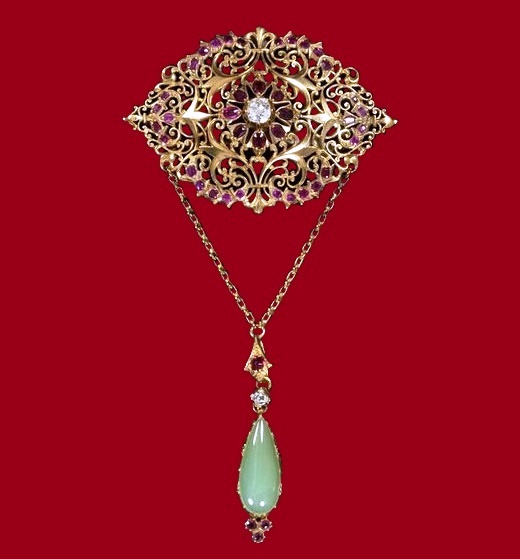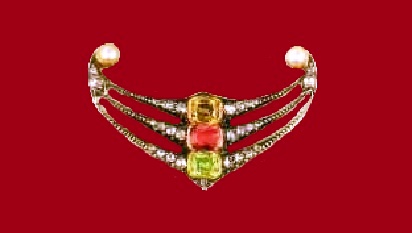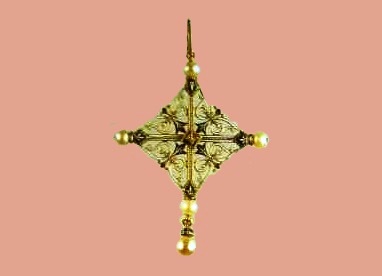Glorious Italian jewellery designer Carlo Giuliano

Egyptian style brooch. Circa 1865-1895. Made of Gold, rubies, diamonds, pearls and enamel. Work by Italian jewellery designer Carlo Giuliano (1831-1895)
Glorious Italian jewellery designer Carlo Giuliano
A native of Naples, Carlo Giuliano (1831-1895) was an antiques dealer, and the personal jeweler of Queen Victoria.
He began his career in Castellani’s workshop in Rome, where he made decorations in archaeological style.
In 1860 he arrived in London and opened a workshop on Fritth Street, where he produced jewelry for such companies as Hunt and Roskell, Robert Phillips and K.F. Hancock. Sometimes on such ornaments and branded cases there are two marks – “C.G.”, and a mark of the seller.
Noteworthy, in 1874 Giuliano opened his own shop on Piccadilly Street, 115. Giuliano became known for neo-Renaissance style, which he adapted to modern fashion with an invariably excellent taste. Like Castellani, Giuliano signed his products. Early works of Carlo Giuliano in the archaeological style have monogram “C.G.”, similar to the intertwined “C” of Castellani. Since 1863 almost all Giuliano’s products have marking “C.G.” in the oval.
After the death of their father in 1896, Carlo-Joseph and Arthur developed a new signature – the monogram “C. & A.G.” in the oval. His sons Carlo-Joseph and Arthur continued the family business. They worked until 1912, and opened the workshop in Knightsbridge. However, due to the outbreak of the First World War they closed the shop.
Giuliano almost eliminated bright colors, covering ornaments with white and blue or black enamel. In fact, he preferred tiny cabochons to glittering faceted stones. And when the Renaissance style began to wane, he began to use less motives of this period.
Glorious Italian jewellery designer Carlo Giuliano

Gold bracelet with enamel and gems. Circa 1900. The twelve stones used in the bracelet – listed in the Book of the Apocalypse, they adorn the gates of the heavenly city of Jerusalem

Renaissance style Gold pendant with enamel and semi-precious stones. 1870. At the center is a cameo made of sapphire

Circa 1875-1880. Gold pendant with enamel, pearls and diamonds. On the reverse side, the signature ‘C.G’































